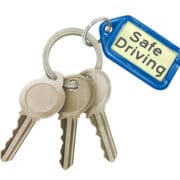Some people may find themselves unprepared and overwhelmed when they first begin caregiving for seniors with memory problems.
It’s normal to experience a wide range of emotions at first, from anxiety and anxiety when assuming the role of caregiver. Eventually, many find their responsibility helps to deepen their compassion.
Although everyone’s situation is different, these Ten Steps may be a helpful guide to most in learning, planning, and following a tailored caregiving plan.
Planning for Care: Seniors with Memory Problems
Step 1: Gather information.
Compare notes with family and friends as well as with your loved one. What issues have been emerging? What have people observed? Have there been changes in behavior? For example, Dad may have stopped taking his medicine or forgotten to turn off the stove. Perhaps he’s unaware of or ignored important past-due notices for mortgage or insurance payments. Getting feedback from several people can help you get a more accurate overview, and also lays the foundation for professionals to make their assessments.
Step 2. Take your loved one for a medical exam.
Some mood issues and medications can cause conditions that mimic memory impairment; seeing a medical professional who can look at physical and mental health is important to catch these problems early on when some treatments can be most effective. A full assessment helps you to formulate a care plan and understand future challenges.
Step 3. Learn, learn, learn.
You are not alone! Meet with professional social workers, doctors, and other caregivers. Find some available resources online and in the community. Read up on disease progression, common caregiving issues. Gathering information is empowering and helps to alleviate the common ‘fear of the unknown.’ Consider keeping a dedicated notebook to which you can refer or hand off to other helpers.
Step 4. Determine out the specific kinds of care assistance that will be needed.
Assessing specific care needs and your loved one’s preferences for mealtimes, shower/baths, etc., is key to developing a schedule and keeping track of the level of care needed for seniors with memory problems, which can change over time. For example, at the onset of dementia or Alzheimer’s, you may need to help with paying bills or doctor’s appointments. Later on, medication management and bathing may require more assistance.
Some local government agencies and hospitals provide low cost or free consultations (geriatric assessments). You can also obtain estimates for care managers or licensed social workers. Here are some common categories involved in assessments:
- Personal care: eating, bathing, dressing, toileting
- Health care: medication management, doctor’s appointments, physical or rehabilitative therapy
- Household care: cooking, cleaning, shopping, laundering, bill paying
- Emotional care: social interaction, enrichment activities, communication
- Supervisory care: wandering prevention oversight and safeguarding
Look for Area Agencies on Aging (AAAs), Caregiver Resource Centers, or other organizations that can guide you to community resources and help arrange for specific services to support you.
Step 5. Create a personalized care plan.
Now that you’ve gathered as much information that you can (perhaps with professional help), you can strategize how best to take care of your loved one AND yourself. Remember, taking care of YOU will ultimately help you with your new responsibilities. Consider both short-term and long-term needs as you will need to periodically update the plan.
Start by listing tasks that you are most comfortable with and capable of handling as well as how much time you can realistically give. Then list the tasks with which other family members, friends, neighbors may be able to help, including activities and companionship. If you anticipate obstacles or opposition, it may be a good idea to write down some strategies for overcoming any foreseeable problems. You may decide that some tasks will need to be performed by other community support services, adult day programs, or home care professionals. Have a backup plan in case of emergencies or if you are not able to continue caregiving long-term.
Step 6. Get the whole financial picture.
Caregiving can involve financial management. You may need to seek advice from a financial planner or lawyer to help you with this process, especially if your loved one is resistant. This can be a difficult change for your loved one, but if they can be involved, transitioning may go more smoothly.
Keep a detailed record of all accounts – both assets and liabilities – and store securely. Also, consider making a backup copy to put a safety deposit box in case of an emergency.
Step 7. Understand legal issues.
You will probably want your loved one’s decisions and wishes to be carried out. It’s important to find, review, or draft any legal documents that authorize you or others to make vital financial, legal or health care decisions. Because this may also a difficult transition, having a lawyer address the issue with your loved one present can provide assurance to both you can your loved one.
Don’t forget to also collect and secure other legal information such as Social Security cards, birth, marriage certificates, divorce settlements, income tax returns, wills, etc. Research eligibility for Medicaid, low-cost elder legal services, or other community programs.
Step 8. Ensure your loved one’s safety.
Keeping to a routine schedule often helps as well as getting training or special equipment for safety. As time goes on and needs change, you may find additional resources and add more safety precautions to prevent fires or injuries.
Some suggested tasks are:
- Store sharp knives, razors, needles, etc.
- Assess the home for fire or poison hazards (stoves, matches, appliances, poisonous household products, etc.)
- Prevent falls:
- Remove or clean up furniture or rugs that obstruct pathways
- Clean up outside object and areas that may cause falls (loose bricks, tree roots, gardening equipment, etc.)
- Watch our for long clothing or loose-fitting shoes that may cause falls
- Install bathroom grab bars and grips, non-skid rugs, mats, paper cups rather than glass
- Supervise alcohol/drug use
- Monitor and secure medicines
- Improve lighting as necessary
- Adjust the water heater temperature to avoid burns
- Ensure proper nutrition and food intake
- Take emergency precautions:
- Identify emergency exits
- Check locks and/or add door alarms
- Get an identification bracelet and a current photo in case your loved one wanders
- Gather emergency phone numbers and information
Step 9. Get support.
Connecting with other people in the same situation can provide much needed social and emotional support. You may often receive and share recommendations on local resources and tips. Consider in-person or online support groups where you can share your feelings and gain insights into coping strategies or attend local workshops, meetings, seminars.
Step 10. Practice self care!
The most important tip is to ensure your physical and mental wellbeing for yourself and your charge. Caregivers of seniors with memory problems are under extra stress and may become more susceptible to high blood pressure, depression and other conditions. By practicing basic preventative healthcare and self-care, you can protect your health and be in the best position to provide care:
- Exercise daily.
- Hydrate.
- Nourish yourself with nutritious foods.
- Make sure you get enough sleep.
- Attend to your own medical needs and get regular check-ups.
- Take time out for yourself! Having time to relax or be social is essential to your mental and physical health.
 In my search for answers (or at least some interesting questions to ask), I read a book by Ashton Applewhite titled “This Chair Rocks, A Manifesto Against Ageism”. It’s a thought-provoking 278 pages. The author challenges many of the current concepts of aging, and while there is not enough room here to do the book justice about how to fight “ageism” – here are some of my favorites quotes:
In my search for answers (or at least some interesting questions to ask), I read a book by Ashton Applewhite titled “This Chair Rocks, A Manifesto Against Ageism”. It’s a thought-provoking 278 pages. The author challenges many of the current concepts of aging, and while there is not enough room here to do the book justice about how to fight “ageism” – here are some of my favorites quotes:










You must be logged in to post a comment.